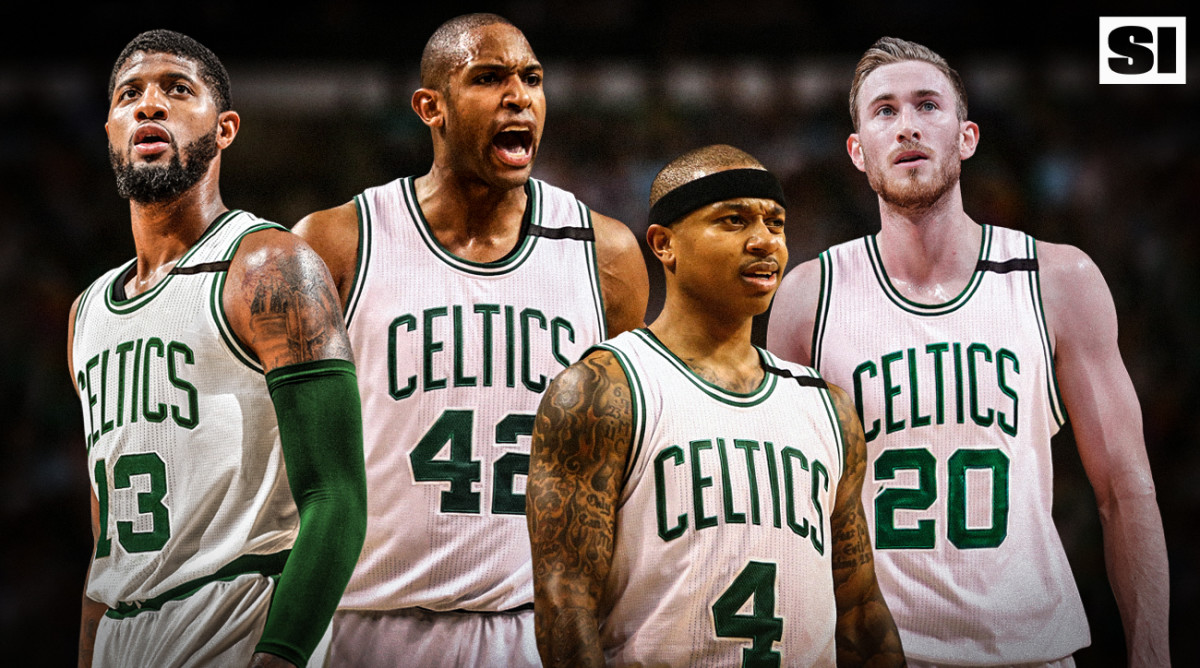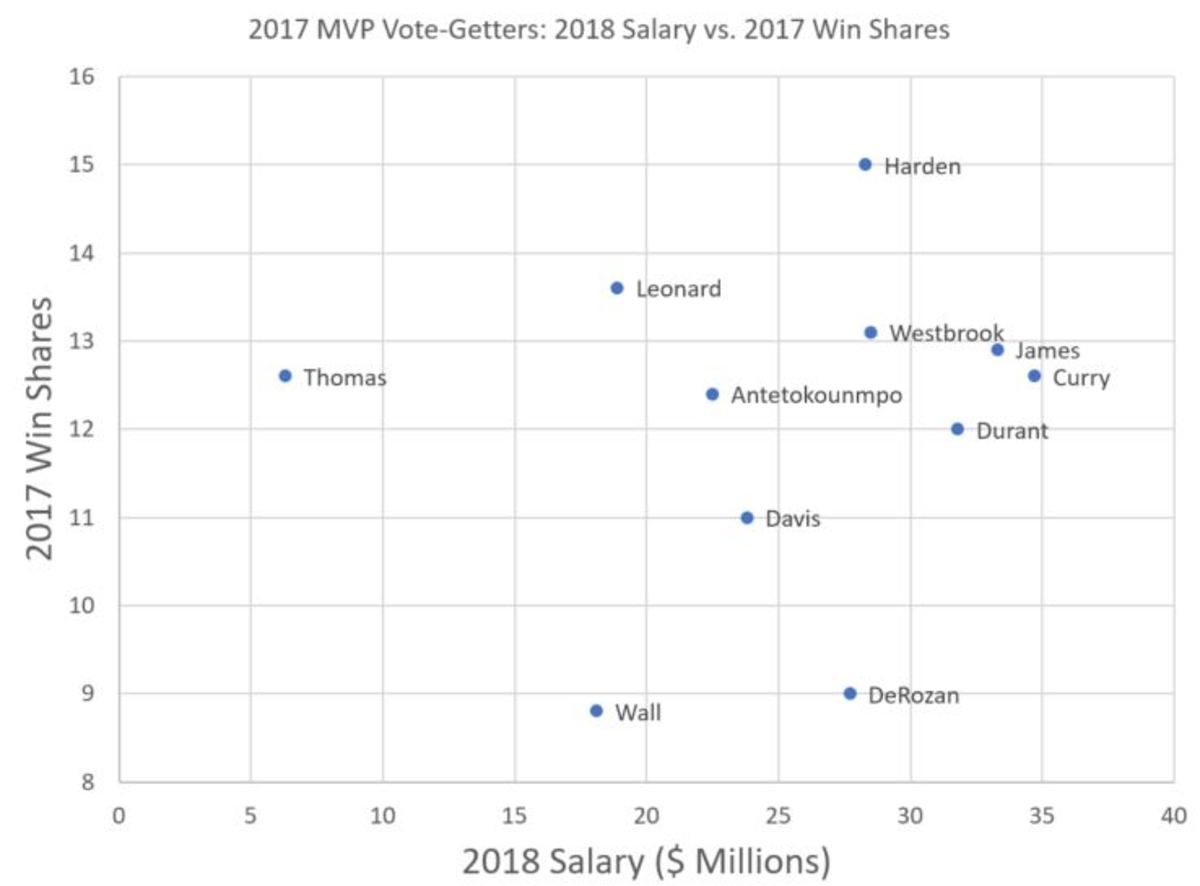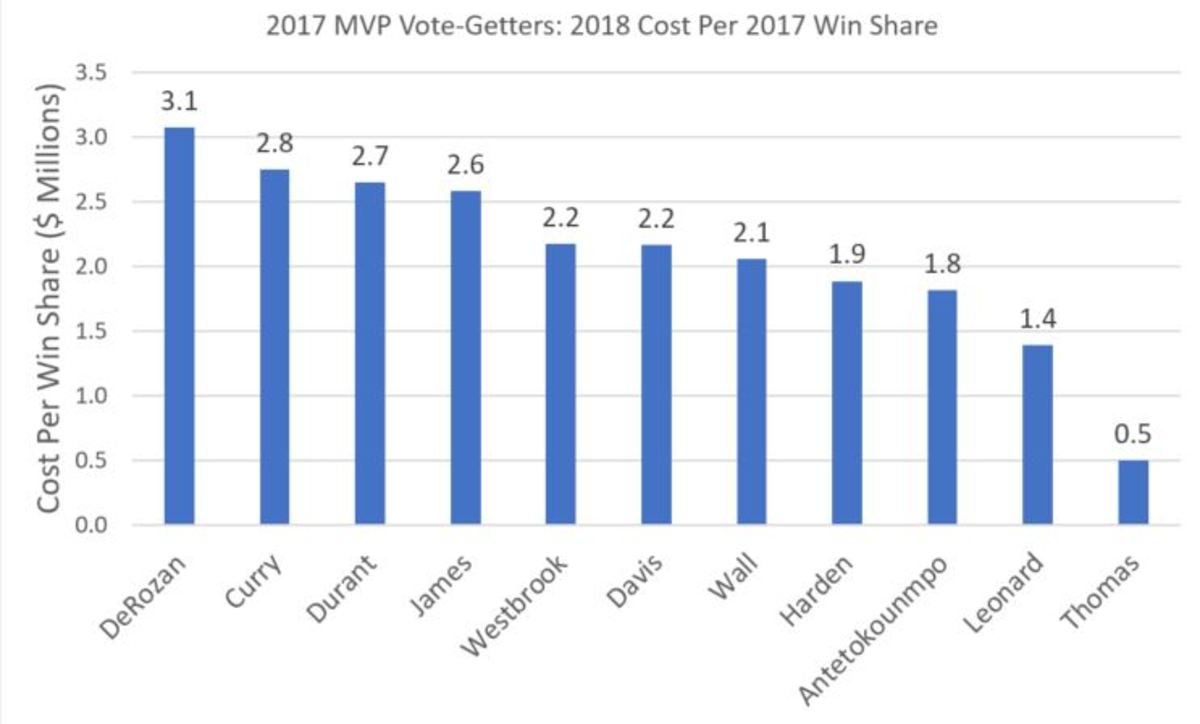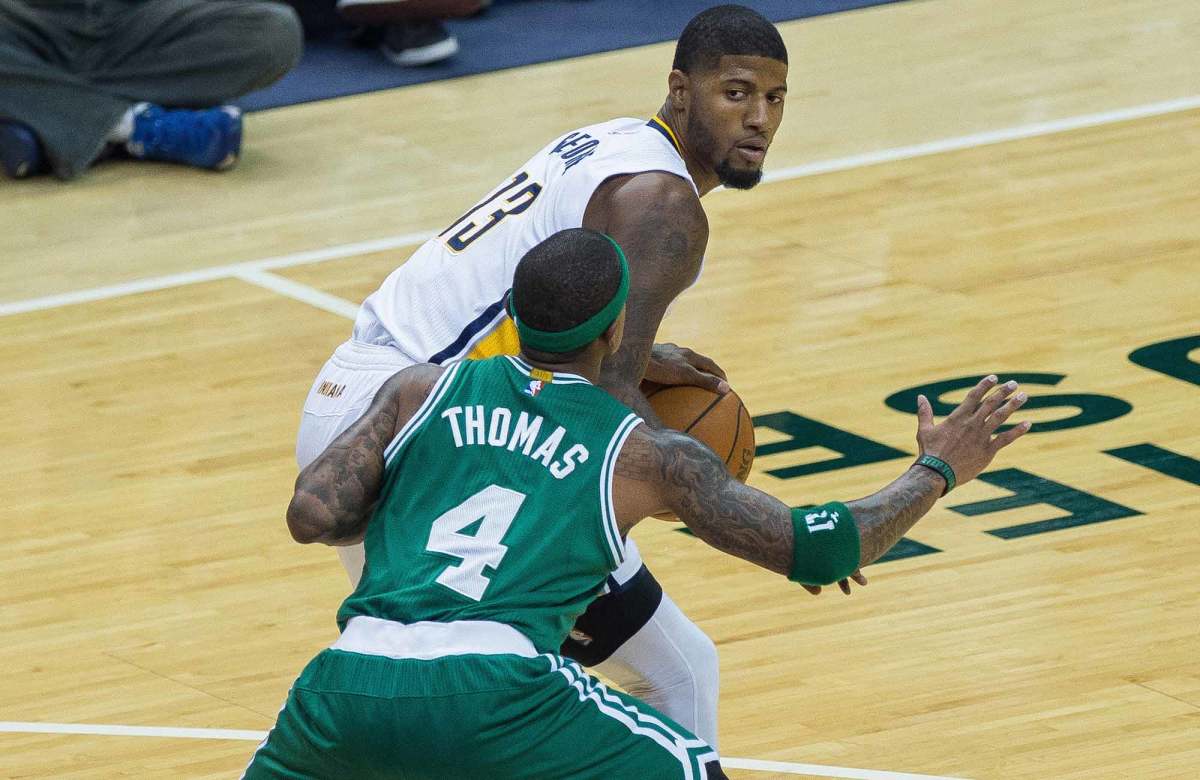Are The Celtics On The Brink Of A Superteam?

Isaiah Thomas’s dream season led Boston to the Eastern Conference finals, and now his sweetheart contract may very well produce a blockbuster summer that could take the franchise even further next year.
While Celtics president Danny Ainge has kept his fanbase waiting and waiting, he is now poised to enter the July free-agency period with a competitive advantage not shared by any of the league’s other contenders: a proven franchise-level performer who is compensated like a mid-level role player.
The NBA’s smallest star and his bargain contract will be Ainge’s biggest weapon as the Celtics pursue a possible trade for Paul George and top free agents like Gordon Hayward and Blake Griffin. In a best-case version of events, like the one outlined by Yahoo Sports on Tuesday, the Celtics could assemble a “Big 4” core of All-Stars that features holdovers in Thomas and Al Horford plus newcomers Hayward and George.

Every post-title explainer of Golden State’s success should include mention of Stephen Curry’s four-year, $44 million contract, a deal agreed to back in 2012 when he was still facing questions over his problematic ankles and hadn’t yet vaulted to superstardom. That deal, which is finally set to end after spanning two MVP seasons and three Finals appearances, made life easier for Warriors management every step of the way.
Having Curry locked in on such a low number made it easier to pursue Andre Iguodala in 2013, facilitated low-drama second contracts for Klay Thompson in 2014 and Draymond Green in 2015, and enabled Kevin Durant to sign on once the cap spiked last summer. Golden State could still have won titles and generated dynasty discussion had Curry pulled down max money on his second contract, but they wouldn’t have been in position to obtain and retain the so-called Hamptons 5.
NBA Free Agency 2017: Top 50 Players Available
To be clear, Thomas is not Curry. Both enjoyed sensational seasons last year, but only one has keyed the winningest three-year run in NBA history, led his team to historic offensive efficiency numbers, rewritten the three-point record book, and managed to play better-than-terrible defense. That’s Curry, who is set to cash in to the tune of $200+ million later this summer.
But Thomas, like Curry before him, has outperformed his four-year, $27 million contract to a staggering degree over the last two seasons. The following chart plots the 11 players to receive at least one 2017 NBA MVP vote by two measures: their upcoming cost (in 2017-18 salary) and their 2017 production (in Win Shares). Note that next year’s salary is used because those are the numbers that front-office executives must maneuver around once the wheeling and dealing commences on Saturday.

The key takeaway from this plot should be the giant horizontal gap between Thomas and the other 10 MVP vote-getters. Remarkably, Thomas’s 2017-18 salary of $6.3 million is three times cheaper than nine of the 10 other players. Curry, for example, is projected to earn $34.7 million next year, more than 5.5 times Thomas’s salary. Even Milwaukee’s Giannis Antetokounmpo, who is entering the first year of his rookie extension, will make nearly 3.6 times as much as Thomas. Although John Wall has grumbled about the size of his own rookie extension, he’ll still earn 2.8 times more than Thomas after the Wizards lost to the Celtics in the second round.
To really drive this point home, let’s roughly quantify return on investment for these 11 stars. How much will NBA teams be paying these stars next season relative to their 2016-17 production?

In the case of LeBron James, still the best player in basketball, Cleveland will be shelling out roughly $2.6 million per Win Share based on his $33.3 million salary and 12.9 Win Shares. That figure is nearly identical for Curry ($2.8 million per Win Share) and Durant ($2.7 million per Win Share) based on their projected salaries if and when they re-sign with Golden State as free agents come July. Those guys are obviously worth every penny.
But Thomas again stands as a crazy outlier, earning only $500,000 per Win Share based on his $6.3 million salary and 12.6 Win Shares. That’s a far better return than the other 10 NBA MVP vote-getters, including Leonard, his closest competition ($1.4 million per Win Share).
It goes without saying that return on investment is not the be-all, end-all criteria for ranking players. Outside of Toronto’s DeMar DeRozan, the worst performer by this Salary-to-Win-Share measure among the 11 MVP vote-getters, moving Thomas likely wouldn’t garner any of the players listed in a straight-up deal. Would Washington rather have Wall or Thomas on their respective contract numbers knowing that Thomas will be due a new contract next summer? Wall. Same with Russell Westbrook, James Harden, and the rest. Thomas’s abysmal defensive impact, lack of size, season-ending hip injury, and 2018 contract negotiations are all factors that must be considered when comparing him to his fellow All-Stars.
Isaiah Thomas: The Boston Celtics' Little Ticket
The great news for Boston is that whether Thomas is worth max money and whether he can be the best player on a championship team are less relevant than, “Which star or stars can the Celtics add with all the money Thomas’s current contract is saving them?”
Let’s imagine the straightforward scenario in which the Celtics move smaller contracts and future picks to Indiana to rent George. Boston’s subsequent Big 3 of Thomas, George and Horford would earn $53.3 million in 2017-18, barely more than half of next year’s $99 million cap and $21+ million less than Cleveland’s trio of James, Kyrie Irving and Kevin Love.
Throw in a maxed-out Gordon Hayward starting at $29.7 million, and the Celtics’ Big 4 would still be earning just $83 million next year compared to the projected $101 million that Curry, Durant, Klay Thompson and Draymond Green will earn in Golden State. At that point, Thomas’s contract would be the difference between Boston keeping together a reasonably deep rotation and being forced to fill out around a top-heavy quartet with a bottom-dollar supporting cast.

When the Celtics landed the No. 1 pick at the draft lottery, there was a healthy debate over the franchise’s ideal timeline. Should they wait out the Warriors and play for the future by trading Thomas and drafting consensus No. 1 pick Markelle Fultz to pair with Jaylen Brown and their other youngsters? Should they try to have their cake and eat it too by keeping Thomas, drafting Fultz and then shopping this summer? Should they accelerate their plans by trading Fultz in a blockbuster for immediate help?
Those disparate options appeared to distill towards the middle path when Boston elected to trade down and select Jayson Tatum, banking an extra future first round pick. Yet Ainge’s capacity to construct a true contender is guided mostly by Thomas’s contract rather than the upside of youngsters like Tatum and Jaylen Brown. If the Celtics are going to vault into the Superteam discussion in the foreseeable future, it must happen this summer before they break the bank for Thomas or lose him in free agency.
This all makes for a simple, compelling pitch to Hayward, Griffin and even the LA-lusting George. “If you want to play in a lineup that starts four prime All-Stars and still has adequate second-unit depth,” Ainge can say, “Boston is your only option.”
NBA Stock Watch: Free Agency Rumors, Paul George Dreams And More
Cleveland must part with one of its Big 3 to add George and it has no clear method for chasing a free-agent star. Its best case, should a George trade fall through, is probably to pray for buyouts to fading 30-somethings like Carmelo Anthony and Dwyane Wade. Meanwhile, Toronto will be paying through its eyeballs just to keep together its unspectacular core trio of Kyle Lowry, DeRozan and Serge Ibaka. Ditto for Washington, who needs to pay up to keep Otto Porter and doesn’t have much else to facilitate the addition of a star to complement Wall and Bradley Beal.
Out West, Golden State’s group is highly unlikely to see major turnover. San Antonio will be hard-pressed to add a single max-level star like Chris Paul to its books, let alone two. Houston would have to move mountains to construct a Big 3 around Harden. A Rockets Big 4 is more or less inconceivable given their existing commitments to non-stars like Ryan Anderson and Eric Gordon. And the Clippers will be playing defense on Paul, Griffin and guard J.J. Redick and have struggled for years to surround their Big 3 with impact players. Doc Rivers and company might succeed in keeping their three stars together, but they will find it hard to reasonably pitch their own guys—and trade targets—on the formation of a Big 4.
Will marquee free agents buy what Ainge is selling? That remains to be seen, but his ability to sell such a grandiose vision is only possible thanks to Thomas’s unexpected—and as-yet-uncompensated—breakthrough from forgotten second-round pick to prodigious scoring monster.
